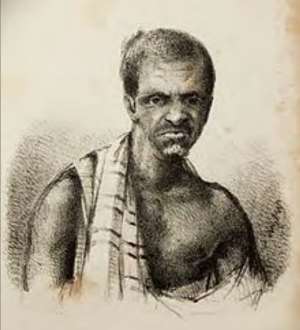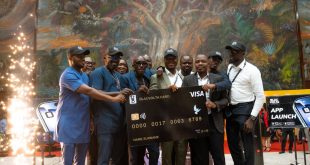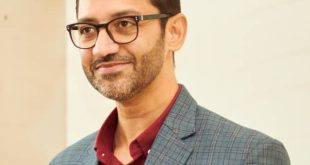As the Dutch government is issuing apologies for their role in slavery which lasted for 250 years, we the natives of Ahanta in Ghana demand justice for Badu Bonso II and all Ahantas who were massacred upon instructions of Williams I of Netherlands in 1838.
We demand that the head of Badu Bonso II be properly restituted and Ahanta be restored and repatriated for all the atrocities that the Dutch committed against us during their invasion of Ahanta in colonial times. We demand that everything that was taken from us through unjustified means be returned to us. We demand that Dutch government takes full responsibility to reconstruct Ahanta after burning our towns and villages leading to displacement of multitudes of Ahanta in 1838.
For us, it is not about apologies at all, but much more of a situation of doing what is morally right by the Dutch government to ensure that we are given back whatever they took from us through foul means. Apologies will never be enough, and we will continue to ask the Dutch government to blot it colonial sins by ensuring that we are fully compensated for all the atrocities they committed against us.
On Monday, 19th December 2022, the Dutch government formally issued apology for their role in slavery. In the presence of invited audience at the National Archive in Hague, in the Netherlands, the Dutch Prime Minister, Mark Rutte read a 20-minute speech to formally to formally apologize for the role they played in slavery which lasted for 250 years.
Less is said by atrocities committed by the Europeans, particularly the Dutch against Ahantas of Ghana but now that the Dutch government has openly issued apology for the role they played in slavery, it is time to bring Badu Bonso II home for him to take a rest with our ancestors. It is time the Dutch pacify their own sins by ensuring that the head of Badu Bonso II reaches Ahanta as soon as possible.
The Dutch like other European explorers found themselves in Ahanta in the later part of the fourteenth century, and in 1565, they signed the Butre Treaty with Ahanta chiefs and made Ahanta a Dutch protectorate. They quickly dislodged the Portuguese from Ahanta and established themselves as a European powerhouse in Ahanta.
In the years after the signing of the Butre Treaty, the Dutch were going to be involved in gold mining in Ahanta and be engaged in all sorts of trading activities and, at one point in time sought to seize all Ahanta lands from the natives but were fiercely resisted by Ahanta chiefs and the natives.
Soon the trade turned into the buying and selling of humans and for the next 213 years or more, the Dutch were going to be actively involved in the buying and selling of humans in Ahanta. Then Badu Bonso II assumed the reigns of Ahanta as the king, and in no sooner than later, he was going to be involved in altercations with the Dutch because he felt the Dutch have interfered in the affairs of Ahanta for far too long and, it was time a stop be put to it.
Badu Bonso II was going to ban the sale of guns and gun powder in Ahanta and that became detrimental to the economic interests and fortunes of the Dutch in the Gold Coast. Then the Dutch started to use some of the Ahanta chiefs who have benefited from the nefarious activities of the Dutch to instigate against Badu Bonso II.
The chief of Sekondi defied the instructions of Badu Bonso II and was secretly selling guns and gunpowder to other tribes who were then using it to raid Ahanta towns and villages. That got Badu Bonso II infuriated and wanted to execute the chief of Sekondi for defying his orders, but he took refuge with the Dutch.
The dispute between the chief of Sekondi and Badu Bonso II escalated as the Dutch got involved and it consequently led to the first and second Dutch -Ahanta wars which were fought in 1837 and 1838. In the second Dutch -Ahanta war of 1838, William I who was then the king of Netherlands dispatched mercenaries under the command of Gen. Jan Verveer to Ahanta to ensure that Badu Bonso II is put to check.
In May 1838, the ships carrying Dutch mercenaries and Gen. Jan Verveer arrived in Elmina and mobilised forces from Sekondi, Shama, Axim and other neighbouring tribes and launched attack on Badu Bonso II and Ahanta. From Takoradi to Cape Three Points, the Dutch burned all Ahanta towns and villages, and left them in ruins. Badu Bonso II himself was captured and hanged to death after which they removed his head and placed it in a formahyde jar and took it to the Netherlands.
Some of his royals were also hanged at Elmina and others were placed on board a ship to the Dutch Indies and, in 1871 after some 213 years of signing the Butre Treaty, the Dutch sold all their trade possessions in Ahanta to the English and left for good. The head of Badu Bonso II was going to get lost at Hague until it was found in 1997 at the Leiden University Medical Center by Arthur Japin, a Dutch author some 170 years later.
In 2009, after 170 years of taking Bad Bonso II’s head to the Netherlands, the Dutch government shamefully, and in a very undignified manner together with the government of Ghana and Ahanta chiefs brought the head of Badu Bonso II to Ghana but failed make sure that it reached Ahanta where he was killed, and his head taken to the Netherlands.
Since 2009, the head of Badu Bonso II has remained in Accra making the whole restitution process incomplete and flawed. So, for us the natives of Ahanta in Ghana, it is not time for apologies but rather we expect that the Dutch government does the needful to ensure that the head of Badu Bonso II is properly restituted with full reparations and repatriations.
For us it is not time for apologies yet. In fact, the apologies are cases of adding more salts to injuries and that really hurt. Time to bring the head of Badu Bonso II home. We demand it.
Apologies will never be enough.
By Ahanta Apemenyimheneba Kwofie III
 Home Of Ghana News Ghana News, Entertainment And More
Home Of Ghana News Ghana News, Entertainment And More





